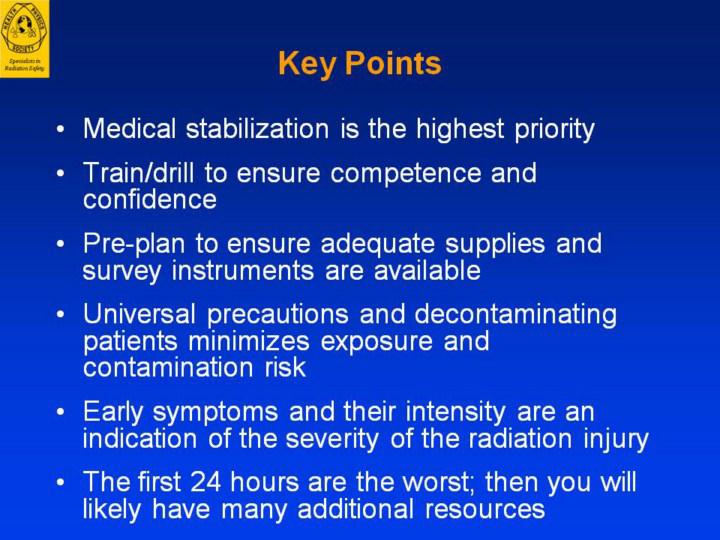| front |1 |2 |3 |4 |5 |6 |7 |8 |9 |10 |11 |12 |13 |14 |15 |16 |17 |18 |19 |20 |21 |22 |23 |24 |25 |26 |27 |28 |29 |30 |31 |32 |33 |34 |35 |36 |37 |38 | 39 |40 |41 |42 |43 |44 |45 |46 |47 |48 |49 |50 |review |
 |
Key Points
•Emphasize
that medical stabilization of the patients is the highest priority.
Patients will not succumb immediately from radiation injury. Radiation
exposure and contamination are not immediately life threatening nor are
contamination levels or exposure levels of significant hazard to
personnel.
•Training
and drills are the best preparation to ensure competence and confidence
by the the ED and other staff identified in the Emergency Plan.
•Pre-plan
to ensure that adequate supplies and survey instruments are available.
Identify non-ED staff that can assist. Staff from Nuclear Medicine,
Radiation Oncology and Radiation Safety have expertise in radiation
protection practices and the use of survey meters.
•The
staff can protect themselves from radioactive contamination by using
universal precautions while treating these patients. Treating these
patients is not an immediate hazard to ED staff health and the long term
risks from the radiation exposure are small.
•Early
symptoms and their intensity in patients are an indication of the
severity of the radiation injury.
•The
first 24 hours are the worst. Then you will likely have many additional
resources from state and federal agencies.
|